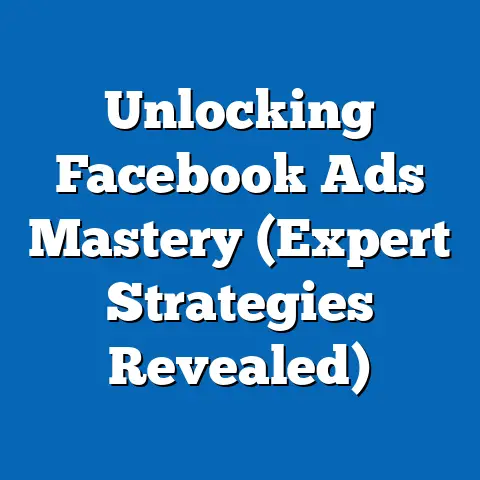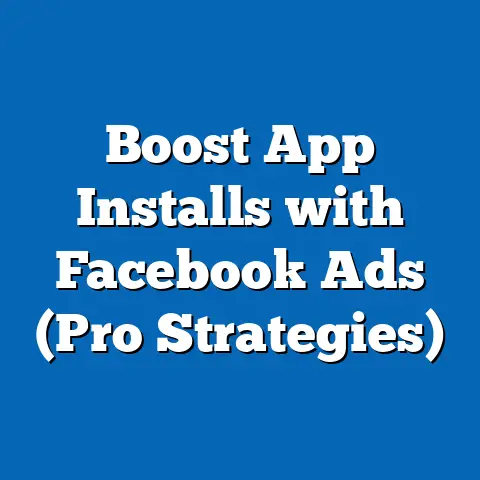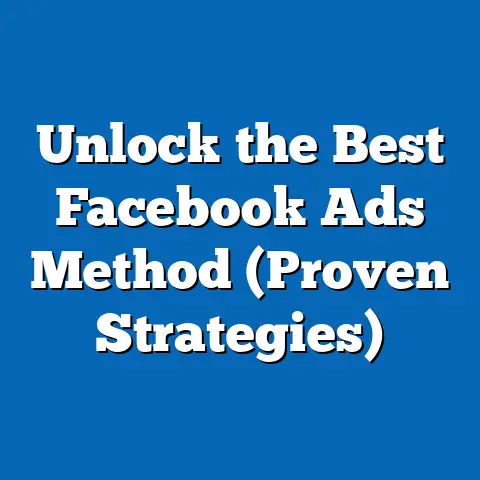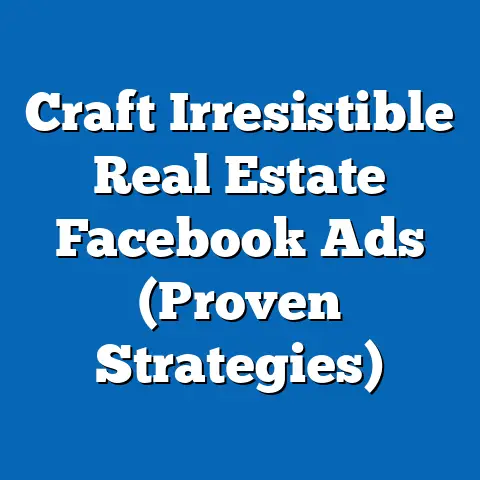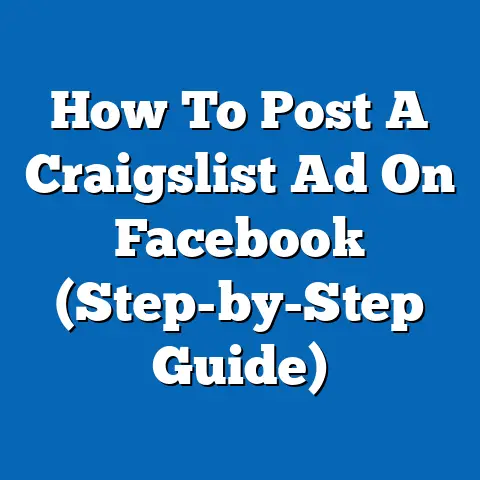Maximize Facebook Ads with Advantage Plus (Expert Insights)
What if you could unlock the full potential of your digital advertising campaigns with a tool that automates optimization, targets audiences with precision, and maximizes return on investment—all with minimal manual intervention? This is the promise of Facebook Ads with Advantage+, a cutting-edge feature introduced by Meta to revolutionize how businesses approach social media advertising. As digital marketing continues to evolve in an era of data-driven decision-making and algorithmic sophistication, Advantage+ offers a glimpse into the future of advertising efficiency and effectiveness.
Defining Characteristics of Advantage+
Advantage+ is a suite of automated advertising tools within the Facebook Ads platform, designed to streamline campaign creation and optimization. Launched by Meta in 2022, it leverages advanced machine learning algorithms to simplify the advertising process, making it accessible to both seasoned marketers and small business owners with limited digital expertise. At its core, Advantage+ focuses on automation, targeting efficiency, and creative flexibility.
One of the standout features of Advantage+ is its ability to automate audience targeting. Unlike traditional Facebook Ads, where marketers manually define audience segments based on demographics, interests, and behaviors, Advantage+ uses Meta’s vast data ecosystem to identify and target high-potential users automatically. This reduces the guesswork and time investment typically associated with campaign setup.
Additionally, Advantage+ offers creative optimization through dynamic ad formats. It allows advertisers to input multiple creative assets—images, videos, headlines, and descriptions—while the algorithm tests different combinations to determine which performs best. This feature is particularly beneficial for businesses aiming to scale their campaigns without the need for extensive A/B testing.
Lastly, Advantage+ campaigns prioritize cost efficiency. By focusing on placements across Meta’s family of apps (including Facebook, Instagram, and Messenger) with the highest likelihood of conversion, the tool minimizes wasted ad spend. Early data from Meta suggests that Advantage+ campaigns can reduce cost-per-action by up to 17% compared to traditional campaigns, though results vary based on industry and campaign goals (Meta, 2023).
Historical Context of Facebook Advertising
To fully appreciate the significance of Advantage+, it’s essential to understand the evolution of Facebook advertising. When Facebook first introduced its advertising platform in 2007 with “Facebook Flyers,” the concept was rudimentary—simple sidebar ads with limited targeting capabilities. These early ads were primarily text-based and lacked the sophistication of modern digital campaigns.
The game-changer came in 2012 with the introduction of Custom Audiences, allowing advertisers to upload customer data for targeted campaigns. This marked the beginning of Facebook’s dominance in personalized advertising, fueled by its unparalleled user data. By 2014, the platform had rolled out Lookalike Audiences, enabling businesses to reach users similar to their existing customers—a precursor to the algorithmic targeting seen in Advantage+.
The late 2010s brought increased scrutiny over data privacy, particularly following the 2018 Cambridge Analytica scandal, which exposed how user data was misused for political advertising. In response, Meta (then Facebook) faced pressure to balance user privacy with advertiser needs, leading to restrictions on data usage and the introduction of tools like the Ads Library for transparency. These changes forced advertisers to adapt to a less data-rich environment, a challenge that Advantage+ aims to address through machine learning and aggregated data insights.
Another pivotal moment was Apple’s 2021 iOS 14 update, which introduced App Tracking Transparency (ATT). This update limited Meta’s ability to track user behavior across apps, impacting ad attribution and targeting precision. Advantage+ emerged as a solution to these constraints, using on-platform data and AI to maintain campaign effectiveness despite external limitations.
Historically, each advancement in Facebook advertising has been shaped by technological innovation, regulatory pressures, and shifting consumer expectations. Advantage+ represents the latest chapter in this story, building on decades of experimentation to deliver a more automated, privacy-conscious approach to digital advertising.
How Advantage+ Works: A Deep Dive into Technology
At the heart of Advantage+ is Meta’s proprietary machine learning technology, which powers its automated decision-making capabilities. The system analyzes billions of data points from user interactions across Meta’s platforms to predict which audiences are most likely to engage with a given ad. This predictive modeling is a significant departure from manual targeting, as it continuously learns and adapts based on real-time performance data.
Advantage+ campaigns operate across multiple stages of the advertising funnel, from awareness to conversion. For instance, Advantage+ Shopping Campaigns, one of the most popular use cases, focus on driving e-commerce sales by automatically optimizing for users likely to make a purchase. According to Meta, early adopters of Advantage+ Shopping Campaigns saw a 12% increase in return on ad spend (ROAS) compared to traditional campaigns (Meta, 2022).
The tool also integrates with Meta’s Advantage+ Placements, which dynamically allocate ad budgets to the most effective placements—whether it’s Instagram Stories, Facebook Feed, or Messenger. This reduces the need for advertisers to manually test different placements, saving time and resources. As digital marketing expert Sarah Johnson notes, “Advantage+ takes the heavy lifting out of campaign management, allowing marketers to focus on strategy rather than execution” (Johnson, 2023).
However, the technology is not without limitations. Advantage+ relies heavily on Meta’s ecosystem, meaning it may underperform for businesses whose audiences are active on other platforms like TikTok or LinkedIn. Additionally, the “black box” nature of the algorithm—where advertisers have limited visibility into how decisions are made—can be a source of frustration for those accustomed to granular control.
Economic Implications for Businesses
The introduction of Advantage+ has significant economic implications for businesses of all sizes. For small and medium-sized enterprises (SMEs), the tool democratizes access to sophisticated advertising capabilities that were once the domain of large corporations with dedicated marketing teams. By automating complex tasks like audience segmentation and creative testing, Advantage+ lowers the barrier to entry for digital advertising.
A 2023 report by Forrester found that SMEs using Advantage+ reported a 20% reduction in campaign setup time and a 15% improvement in cost efficiency compared to manual campaigns (Forrester, 2023). This is particularly impactful for industries with tight budgets, such as retail and hospitality, where every dollar of ad spend must deliver measurable results. As a result, Advantage+ has the potential to level the playing field, enabling smaller players to compete with industry giants.
For larger enterprises, Advantage+ offers scalability. The ability to launch campaigns across multiple markets with minimal customization allows global brands to streamline their advertising efforts. However, some experts caution that over-reliance on automation could lead to homogenized campaigns that lack the unique branding necessary for differentiation. “Automation is a double-edged sword—it saves time but can dilute creativity if not paired with human oversight,” warns digital strategist Mark Thompson (Thompson, 2023).
Economically, the broader adoption of Advantage+ could also influence Meta’s revenue model. As more advertisers shift to automated campaigns, Meta may see increased ad spend from SMEs, offsetting losses from privacy-related restrictions. However, if Advantage+ consistently delivers lower cost-per-action, it could reduce overall ad costs for advertisers, potentially impacting Meta’s bottom line in the long term.
Societal and Cultural Impacts
Beyond economics, Advantage+ has far-reaching societal and cultural implications. One of the most significant is its role in shaping consumer behavior through hyper-personalized advertising. By leveraging machine learning to predict user preferences, Advantage+ ensures that ads are more relevant to individual users, potentially increasing engagement but also raising ethical questions about manipulation and privacy.
The Cambridge Analytica scandal and subsequent privacy regulations have made consumers more wary of how their data is used. While Advantage+ operates within Meta’s updated privacy framework—using aggregated rather than individual-level data—there remains a perception among some users that automated targeting is intrusive. A 2023 Pew Research survey found that 68% of social media users are concerned about how platforms use their data for advertising, even when anonymized (Pew Research Center, 2023).
Culturally, the rise of automated advertising tools like Advantage+ reflects a broader shift toward efficiency and instant gratification in the digital age. Consumers are accustomed to personalized experiences, from Netflix recommendations to Amazon product suggestions, and Advantage+ extends this trend into advertising. However, this hyper-personalization risks creating echo chambers, where users are only exposed to content that aligns with their existing behaviors and beliefs, potentially limiting diversity of thought.
On a positive note, Advantage+ can amplify underrepresented voices by enabling small businesses and creators to reach niche audiences. For instance, minority-owned businesses or advocacy groups with limited budgets can use the tool to connect with supporters, fostering greater inclusivity in the digital space. This democratizing effect aligns with broader cultural movements toward equity and accessibility in technology.
Comparing Advantage+ to Traditional Facebook Ads
To understand the transformative potential of Advantage+, it’s useful to compare it to traditional Facebook Ads. Traditional campaigns require significant manual input—marketers must define audiences, select placements, and create ad variations for testing. While this hands-on approach offers control, it is time-intensive and often requires specialized expertise, making it less accessible to novices.
In contrast, Advantage+ prioritizes automation and simplicity. It eliminates much of the manual work by using AI to handle audience targeting, creative optimization, and budget allocation. This shift allows advertisers to achieve results with less effort, though it sacrifices some of the granular control that traditional campaigns provide.
Another key difference is performance under privacy constraints. Traditional campaigns have struggled with reduced tracking capabilities post-iOS 14, as they rely heavily on third-party data. Advantage+, however, is designed to operate within these limitations by leveraging first-party data from Meta’s platforms, making it more resilient to external changes.
That said, traditional campaigns still have a place for advertisers who prioritize customization and brand-specific storytelling. Advantage+ may deliver efficiency, but it cannot replicate the nuanced creativity that comes from human-driven campaign design. As marketing consultant Emily Chen explains, “Advantage+ is a powerful tool, but it’s not a replacement for strategic thinking—it’s a complement” (Chen, 2023).
Expert Insights on Maximizing Advantage+
To gain deeper insights into how businesses can maximize Advantage+, we consulted several digital marketing experts. Their perspectives highlight both the opportunities and challenges of adopting this tool in a competitive landscape.
Sarah Johnson, a digital advertising strategist with over a decade of experience, emphasizes the importance of high-quality creative inputs. “Advantage+ is only as good as the assets you feed it. Invest in compelling visuals and copy upfront, because the algorithm will amplify what works best,” she advises. Johnson also recommends starting with small budgets to test the tool’s effectiveness before scaling up.
Mark Thompson, a data analytics expert, stresses the need for ongoing monitoring despite the automation. “Don’t set it and forget it. Regularly review performance metrics to ensure the algorithm aligns with your goals, and be prepared to tweak settings if results aren’t meeting expectations,” he cautions. Thompson also notes that Advantage+ works best for campaigns with clear, measurable objectives like sales or lead generation, rather than brand awareness.
Emily Chen, a consultant specializing in e-commerce marketing, highlights the tool’s potential for rapid scaling. “For online retailers, Advantage+ Shopping Campaigns are a game-changer. They allow you to reach high-intent buyers quickly, but you need to ensure your website and checkout process are optimized for conversions,” she explains. Chen also warns against over-reliance on automation, suggesting that human creativity remains critical for standout campaigns.
These expert insights underscore a common theme: while Advantage+ offers unparalleled efficiency, success depends on a balanced approach that combines automation with strategic human input. Advertisers must remain proactive in defining goals, refining creatives, and adapting to performance data.
Challenges and Limitations of Advantage+
Despite its promise, Advantage+ is not without challenges. One of the most significant is the lack of transparency in how the algorithm operates. Advertisers often have limited insight into why certain audiences are targeted or why specific creatives perform better, which can hinder learning and long-term strategy development. This “black box” issue is a common critique of AI-driven tools across industries, not just advertising.
Another limitation is the tool’s dependence on Meta’s ecosystem. While Advantage+ excels within Facebook and Instagram, it cannot account for user behavior on external platforms or offline channels. This can be problematic for businesses with omnichannel marketing strategies that span multiple touchpoints.
Additionally, there is a learning curve associated with interpreting Advantage+ performance data. While the tool simplifies campaign setup, understanding metrics like “automated audience reach” or “dynamic creative impact” requires a baseline knowledge of digital advertising. For complete beginners, this can be a barrier to effective use.
Finally, cost efficiency is not guaranteed. While Meta reports impressive reductions in cost-per-action, results vary widely based on industry, audience, and campaign type. Businesses in highly competitive sectors, such as fashion or technology, may find that Advantage+ struggles to deliver standout results without significant ad spend.
Implications for the Future of Digital Advertising
The rise of Advantage+ signals a broader trend toward automation and AI in digital advertising. As machine learning technology continues to advance, we can expect similar tools to emerge across other platforms, further reducing the manual workload for marketers. This shift has the potential to transform the role of digital advertisers from tactical executors to strategic visionaries focused on creativity and brand-building.
However, this future is not without uncertainty. Regulatory pressures around data privacy are likely to intensify, with governments worldwide scrutinizing how platforms like Meta use user data for advertising. The European Union’s General Data Protection Regulation (GDPR) and California’s Consumer Privacy Act (CCPA) are just the beginning—future laws could impose stricter limits on automated targeting, challenging tools like Advantage+ to adapt.
There is also the question of consumer backlash. As ads become more personalized, some users may push back against perceived overreach, opting out of tracking or abandoning platforms altogether. Meta will need to balance advertiser needs with user trust, a delicate dance that will shape the long-term viability of tools like Advantage+.
On a positive note, the democratization of advertising through automation could empower more businesses to participate in the digital economy. From local startups to global nonprofits, Advantage+ lowers the barriers to reaching audiences, fostering innovation and diversity in the marketplace. If harnessed responsibly, it could contribute to a more inclusive digital landscape.
Forward-Looking Insights and Uncertainties
Looking ahead, Advantage+ is poised to play a central role in the evolution of digital advertising, but its trajectory remains uncertain. Will Meta continue to refine the tool to address transparency concerns, or will the “black box” nature of the algorithm persist as a point of contention? Can Advantage+ adapt to increasingly stringent privacy regulations without sacrificing performance?
One potential development is the integration of generative AI into Advantage+. Imagine a future where the tool not only optimizes existing creatives but also generates ad copy and visuals tailored to specific audiences. Such advancements could further blur the line between human and machine creativity, raising new ethical questions about authenticity in advertising.
Another area to watch is cross-platform compatibility. If Meta partners with other social media giants or ad tech providers, Advantage+ could evolve into a universal advertising solution, transcending the boundaries of its current ecosystem. However, such collaborations would likely face regulatory hurdles and competitive resistance.
Ultimately, the success of Advantage+ will depend on Meta’s ability to balance innovation with responsibility. As digital marketing continues to evolve, tools like Advantage+ offer a glimpse into a future where efficiency and personalization reign supreme—but only if accompanied by transparency, user trust, and adaptability to societal shifts.
Conclusion
Advantage+ represents a bold step forward in the world of digital advertising, offering businesses a powerful tool to maximize their Facebook Ads with minimal effort. Its defining characteristics—automation, dynamic targeting, and cost efficiency—make it a game-changer for advertisers navigating the complexities of a privacy-conscious, data-driven landscape. Rooted in the historical evolution of Facebook advertising, Advantage+ builds on decades of innovation while addressing modern challenges like reduced tracking capabilities and regulatory scrutiny.
The societal and economic implications of Advantage+ are profound, from democratizing access to advertising for small businesses to raising ethical questions about personalization and privacy. While the tool offers undeniable benefits, its limitations—lack of transparency, ecosystem dependence, and variable performance—remind us that automation is not a panacea. Expert insights underscore the importance of pairing Advantage+ with human strategy to achieve optimal results.
As we look to the future, Advantage+ stands at the intersection of technological advancement and societal change. Its ability to adapt to emerging trends, regulations, and consumer expectations will determine its lasting impact on digital advertising. For now, it serves as a testament to the power of AI in transforming how businesses connect with audiences, offering both promise and uncertainty in equal measure.

